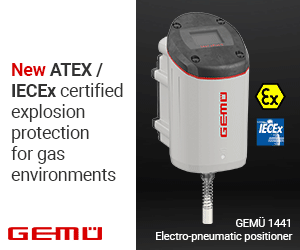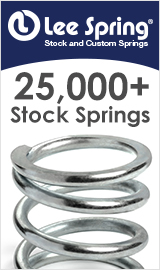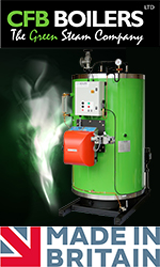Process Industry Non-Linear Electrical Loads – Rcd Safety
Electrical installations for sites, including administration offices, services, research/test labs, manufacturing areas and process lines will contain equipment that has “non-linear load” characteristics. Skilled Persons /Duty Holders (electrically) must have an understanding of the impact this has on the selection of RCD protection devices, to meet the requirements of HSR25 3rd Edition see Reg. 4(1) 65 and 4(4) 79. The standard AC RCDs used in many installations are not suitable for use with non-linear loads.
Electrical Equipment / loads where the impedance changes with the applied voltage are considered to be non-linear. Various methods of voltage and current control used in Power supplies, UPS, Energy saving equipment and Speed control for electric motors, rely on power electronics to alter and or chop the electrical supply. These devices will exhibit nonlinear load characteristics, resulting in non-sinusoidal leakage and residual currents which may or may not contain pulsed or smooth DC current and high frequency AC current components. These loads must only be connected in circuit which are protected by special Types of RCD (RCCB).
Equipment Requiring Special Types of RCCBs
The equipment connected in circuit determines the Type of RCD (RCCB) which must be installed, to provide a defined and safe level of protection as required by the existing Regulations and Codes of Practice. Installations such as offices, laboratories (any area where non-electrical staff work), will be covered by BS7671. Regulation 331 Compatibility of Characteristics, covers the “assessment of characteristics of equipment likely to have harmful effects upon other electrical equipment in the installation” i.e. equipment mounted on the load side of an RCCB must not affect the safety performance of the RCCB.
The table below gives some generic examples based on the installed technology used and the associated RCCB. It is imperative that the inverter manufactures installation instructions are checked, with regard to advice relating to the minimum sensitivity and the Type of RCCB that can be used safely with their equipment. This should be referenced back to any specific requirements contained in the UK Regulations and Codes of practice, which may differ from the International standards.
| Equipment | Inverters ¹ Pumps, M/H, HVAC etc. |
Inverters Pumps, M/H,HVAC etc. |
Lighting ¹ Control , PSU etc. |
Stand-by Generation, UPS |
Electric Vech. ² (EVCP) Mode 2&3 ³ |
|---|---|---|---|---|---|
| RCCB | 1 ph | 3 ph | 1 ph | 1 ph & 3 ph | 1 ph & 3 ph |
| Type A | ✔ | ✘ | ✔ | ✔ | ✔ |
| Type AKV | ✘ | ✘ | ✔ | ✘ | ✔ |
| Type F | ✔ | ✘ | ✘ | ✘ | ✘ |
| Type B | ✔ | ✔ | ✘ | ✔ | ✔ |
| Type EV ⁴ | ✘ | ✘ | ✘ | ✘ | ✔ |
| Selection Notes |
¹ Selection based on the equipment technology and installation, ² Selection based on the Make and Model of the vehicle to be,charged, ³ Mode 4 requires Type B RCCB, ⁴ EV applications only / similar to AKV + Trips if smooth DC,fault current,> 6mA |
||||
Example: Pumps and Centrifuges use inverter based speed control
Buildings with PME earthing may not require RCCB protection on fixed equipment -see Reg411. If the building or part of the installation is on a TT supply, it is probable that an RCCB will be required to meet Reg 411. Normally any equipment connected by plug and cable must be RCD protected, a risk assessment will determine what is required and any additional steps that need to be taken.
Meeting Regulation 331: Inverters operating on 3 phase supplies must only be connected to circuits protected by Type B RCCBs. For single phase inverters refer to the manufactures instructions with regard to the Type of RCCB, as individual designs determine the Type of RCCB required e.g. A, F or B.
RCCB Checklist
Having a basic understanding of the different Types of RCCB specified by inverter based equipment manufactures and their characteristics, reduces the risk of installing inappropriate protection in contravention of the existing Regulations.
RCCBs are designed and calibrated to operate in the presence of specific types of residual current, basically the greater the complexity of the residual current flowing under fault conditions, the more complex the design of RCCB required to detect those currents e.g. Type AC RCCBs subjected to smooth DC leakage currents will not effectively sense AC earth fault current under fault conditions.
Operational leakage currents for nonlinear loads can be significantly higher than conventional equipment, and must be taken into account when designing the installation. RCCB tripping current (sensitivity) must be selected based on the operational leakage currents, and the load circuits’ sub divided if necessary to prevent unwanted tripping – see regulation 531.2.4
General summary of RCCB limits of operation / refer to manufacture for full data
| Residual / Leakage current components | Transient Resistant | ||||
|---|---|---|---|---|---|
| RCCB Type |
AC 50Hz | AC 50 Hz Pulse | Smooth DC | AC> 50Hz<kHz | 3kA 8/,20µS Current Wave |
| AC | ✔ | ✘ | ✘ | ✘ | ✘ |
| A | ✔ | ✔ | ˂ 6mA | ✘ | ✘ |
| AKV | ✔ | ✔ | ˂ 6mA | ✘ | ✔ |
| F | ✘ | ✘ | ˂ 10mA | ✔ | ✔ |
| B | ✔ | ✔ | ✔¹ | ✔ | ✔ |
| EV | ✔ | ✔ | ˂ 6mA² | ✔ | ✔ |
| ¹ Type B RCCBs detect DC residual currents and trip if the smooth,DC current exceeds 30-40mA. Type A, AKV and F will function safely with smooth DC residual currents present up to the levels indicated but they do not detect smooth DC. Therefore they must not be installed upstream of Type B RCCBs. ² Type EV RCCBs trip if the,smooth DC current > 6mA i.e. Must only be used for protecting a single EVCP |
|||||
Further Reading
For more detailed information on specific applications relating to RCCB selection, please refer to the Doepke
UK Web site: – link to Technical Articles http://www.doepke.co.uk/download/download.html
– link to Type B Application Guide http://www.doepke.co.uk/rcd/Designer.html
Chaz Andrews – Technical Manager, Doepke UK Ltd





























































































































